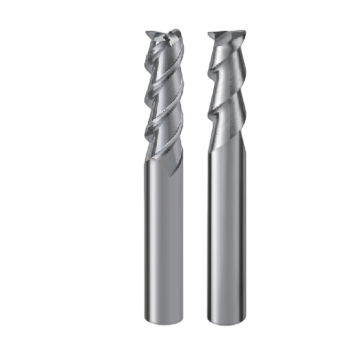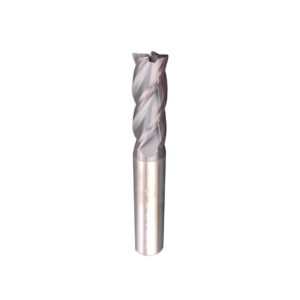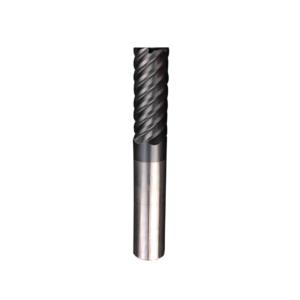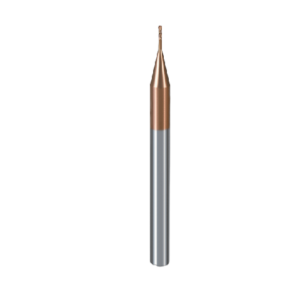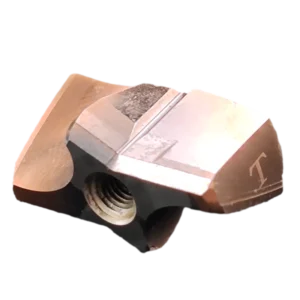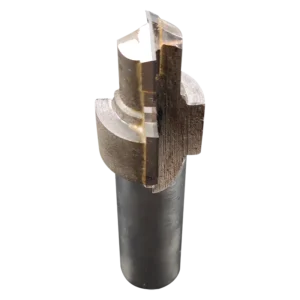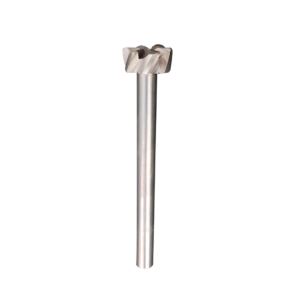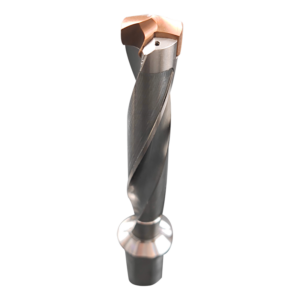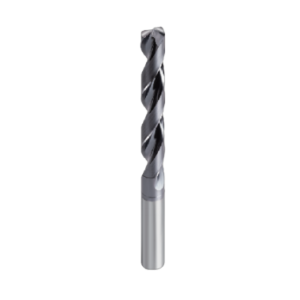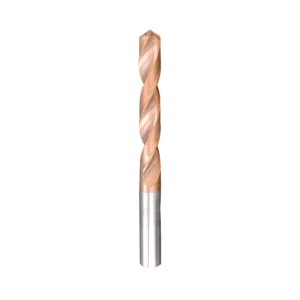Table of Contents
ToggleChip clogging is a persistent challenge in aluminum machining, especially when using tools like 2/3 flutes square end mills. These tools are favored for their balance of material removal efficiency and surface finish quality, but improper use can lead to chip accumulation, tool wear, and even workpiece damage. Understanding the root causes of chip clogging—and implementing targeted solutions—can dramatically improve machining outcomes. Let’s explore the strategies to keep chips flowing smoothly when working with aluminum 2/3 flutes square end mills.
The Science of Chip Formation in Aluminum Machining
Aluminum’s soft, ductile nature makes it prone to producing long, stringy chips during machining. Unlike brittle materials that fracture into small pieces, aluminum chips tend to curl and cling to the tool or workpiece. This behavior is exacerbated when using 2/3 flutes square end mills, where the reduced number of flutes (compared to 4+ flutes) creates larger chip pockets. While fewer flutes improve chip evacuation in theory, improper parameters or tool geometry can still lead to clogging.
The key lies in optimizing the interplay between chip load, tool geometry, and cutting conditions. For aluminum 2/3 flutes square end mills, the goal is to generate chips that are small enough to evacuate easily but large enough to carry heat away from the cutting zone.
Tool Geometry: Design Matters
The design of aluminum 2/3 flutes square end mills plays a critical role in chip management. Here’s what to look for:
High Helix Angles (35°–45°):A steep helix angle lifts chips upward and out of the cutting zone, reducing the risk of recutting or clogging.
Polished Flutes:Smooth, mirror-like flutes minimize friction, allowing chips to slide out effortlessly.
Variable Pitch Design:Tools with uneven flute spacing disrupt harmonic vibrations, which can otherwise cause chips to bunch up.
Chip Breakers:Some advanced 2/3 flutes square end mills incorporate micro-geometries on the cutting edges to fracture chips into manageable segments.
A study comparing standard and high-helix 3-flute end mills found that the latter reduced chip clogging incidents by 60% in aluminum face milling operations.
Optimizing Cutting Parameters
Even the best-designed aluminum 2/3 flutes square end mills will underperform if cutting parameters aren’t dialed in. Three factors are critical:
Spindle Speed (RPM):High spindle speeds are essential for aluminum. For a ½-inch 3-flute tool, speeds between 10,000 and 18,000 RPM generate sufficient heat to soften chips slightly, making them less sticky.
Feed Rate:A higher feed rate increases chip thickness, preventing thin, gummy chips that are prone to adhesion. For example, a feed rate of 0.004–0.006 inches per tooth (IPT) is ideal for most aluminum alloys.
Depth of Cut (DOC):Moderate radial depths (30%–50% of tool diameter) and axial depths (up to 1× diameter) ensure chips have enough space to exit the flutes.
A common mistake is using overly conservative parameters, which produce thin chips that weld to the tool. Aggressive, high-speed machining often yields better chip control with aluminum 2/3 flutes square end mills.
Coolant and Lubrication Strategies
While aluminum can be machined dry, using coolant or lubricant significantly reduces chip clogging risks. Two approaches work well:
Flood Coolant:Directs a steady stream of coolant to the cutting zone, cooling the tool and flushing chips away. For aluminum 2/3 flutes square end mills, water-soluble coolants with anti-weld additives are particularly effective.
Mist Lubrication:A compressed air-and-lubricant mixture minimizes heat while keeping chips airborne and away from the tool. This method is ideal for shallow cuts or finishing passes.
Avoid excessive coolant pressure, which can force chips back into the flutes. Instead, position nozzles to align with the tool’s rotation direction, leveraging centrifugal force to eject chips.
Tool Coatings and Surface Treatments
Uncoated aluminum 2/3 flutes square end mills are popular for their sharp cutting edges, but specialized coatings can further mitigate clogging:
Non-Stick Coatings (e.g., ZrN or Diamond-Like Carbon):Reduce the chemical affinity between aluminum and the tool, preventing material adhesion.
Polished Substrates:Some manufacturers apply post-coating polishing to enhance surface smoothness, making it harder for chips to stick.
While coatings add cost, they can extend tool life by up to 40% in high-volume aluminum machining.
Machine and Workpiece Setup
Even minor misalignments or vibrations can disrupt chip flow. Ensure:
Rigidity:Secure the workpiece and tool holder to minimize vibration, which contributes to erratic chip formation.
Tool Runout:Keep runout below 0.0005 inches. Excessive runout unevenly distributes cutting forces, leading to inconsistent chip sizes and clogging.
Chip Evacuation Pathways:Use compressed air nozzles or vacuum systems to actively remove chips from the machining area, especially in deep-pocket or closed-profile operations.
Operational Best Practices
Climb Milling Over Conventional:Climb milling (where the tool rotates in the same direction as the feed) pushes chips ahead of the tool, reducing recutting.
Interrupted Cuts:For deep slots, use pecking cycles or helical interpolation to break up chips and clear the flutes periodically.
Regular Tool Inspection:Check aluminum 2/3 flutes square end mills for built-up edge (BUE) or flute damage, which can trap chips. Clean tools with a brass brush to remove residual aluminum.
Case Study: Solving Chip Clogging in Automotive Parts
A manufacturer of aluminum transmission housings struggled with chip clogging during slot milling with 3-flute square end mills. By switching to a high-helix (40°), ZrN-coated tool and increasing feed rate from 0.003 IPT to 0.005 IPT, chip clogging incidents dropped by 75%. Additionally, implementing pulsed coolant delivery reduced downtime for chip clearing.
Preventing chip clogging with aluminum 2/3 flutes square end mills requires a holistic approach—combining optimized tool geometry, precise cutting parameters, and proactive chip management. By addressing both the mechanical and chemical factors that contribute to adhesion, machinists can unlock the full potential of these tools, achieving faster cycle times, longer tool life, and impeccable surface finishes. Whether you’re machining aerospace components or consumer electronics parts, mastering chip control is the key to efficient, frustration-free aluminum machining.
-
Kugelkopffräser mit Mikrodurchmesser und 2 Schneiden
Fräswerkzeug-Serie -
Nicht-Standard-Umformwerkzeuge-1
Nicht-Standard-Werkzeugserie -
Nicht-Standard-Umformwerkzeuge-2
Nicht-Standard-Werkzeugserie -
Nicht-Standard-Umformwerkzeuge-3
Nicht-Standard-Werkzeugserie -
Nicht-Standard-Umformwerkzeuge-4
Nicht-Standard-Werkzeugserie -
Kronenbohrwerkzeuge
Kronenbohrwerkzeuge -
Nicht-Standard-Umformwerkzeuge-7
Nicht-Standard-Werkzeugserie -
Hartmetallbohrer (Außenkühlung)
Bohrwerkzeug-Serie -
Hartmetallbohrer (Innenkühlung)
Bohrwerkzeug-Serie

